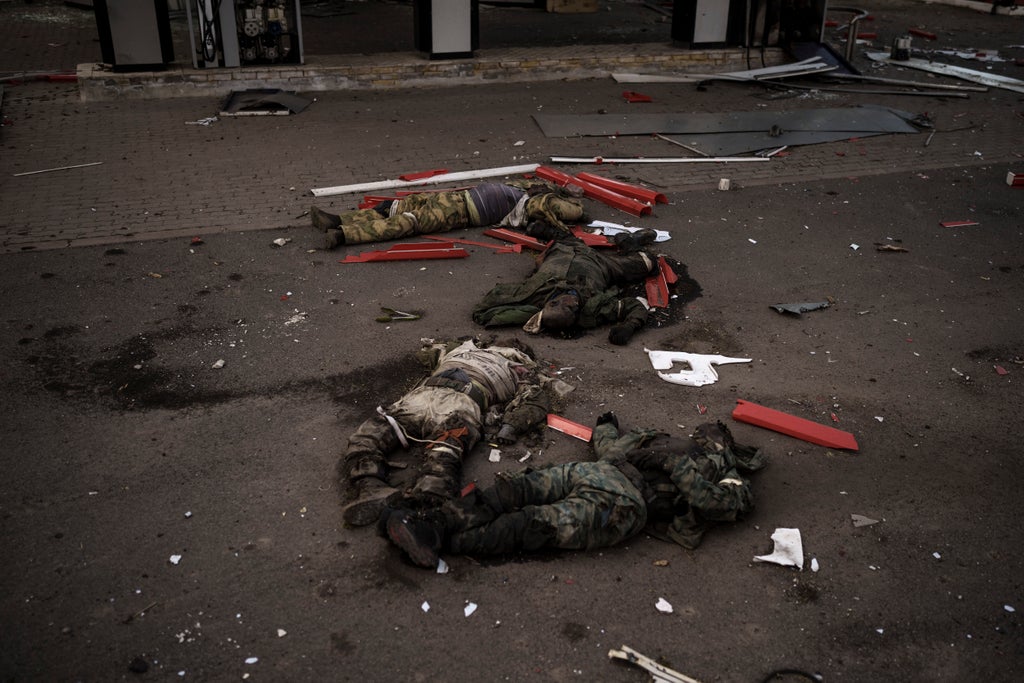
The bodies of Russian soldiers, some horribly disfigured. Relatives weeping over the dead, some killed because they were in the wrong place at the wrong time. And always, the thousands of Ukrainians fleeing horrific destruction as their cities and villages came under bombardment.
These are the images that Associated Press photographer Felipe Dana captured while working in Ukraine for just over 10 weeks beginning in early March, from Lviv in the west, to the capital of Kyiv, and farther east to Kharkiv, Dnipro and Zaporizhzhia.
He says he often arrived in a neighborhood along with emergency workers, minutes after a Russian attack.
Sometimes Dana found a spouse next to the body, crying. Other times, bodies would be on a nearly empty street, fatally struck by a small piece of shrapnel.
“I saw a lot of things I wish never happened, horror scenes I can only hope will never repeat,” he says.
Especially hard, he says, were seeing the all-too-common scenes of refugees displaced from their homes, seeking a safe place from the shelling.
“Although we expect that to happen when there is war, it’s still hard to see, and it still impacts you a lot,” Dana adds.
In some places, he walked into basements being used as shelters and found entire families, especially elderly women, living with no electricity or water, as their homes above them were bombarded.
More recently, as the Ukrainians retook control of some villages near the second-largest city of Kharkiv, he said many of these sites had the feel of an open-air morgue. He saw bodies of men, believed to be Russian soldiers, arranged in a “Z,” which Moscow has used as a symbol of the invasion, as well as a charred body propped against an anti-tank barrier.
There was no immediate explanation for either, which could be considered war crimes, for disrespecting the dignity of the dead.
Dana says that he has been to Ukraine many times in recent years but what he saw in Ukraine was hard to imagine and even harder to forget.







